News 4/4/18
Top News
GE Healthcare will exit the health IT market by selling its revenue cycle, ambulatory care, and workforce management software business to Veritas Capital for $1.05 billion in cash.
Veritas Capital’s previous health IT acquisitions include Verisk Health (2016, renamed to Verscend) and the healthcare unit of Thomson Reuters (2012, sold to IBM for double its acquisition price in 2016).
GE Healthcare joins previous healthcare IT acquisition-fueled dabblers (McKesson, Siemens, Misys, Sage) in wrecking a bunch of acquired companies and then cutting and running when the expected massive profits didn’t materialize. Or as I wrote a long time ago, “conglomerate vendors that seem to be happy milking the wrinkled, desiccated udders of their thinning herds of malnourished and badly aging cash cows,” to which I added further back in 2006, “ Healthcare IT customers carry little weight with toe-dippers. Are GE brass more worried about the flatlining former CareCast or sagging toaster sales at Wal-Mart? Does patient safety come up in Siemens corporate meetings as often as power generators?”
Reader Comments
From Penultimate: “Re: EMRs as a research database. I looked at the article you linked to in your tweet about conglomerate vendors. That took me to the one where you predicted that EMRs linked to genomic data and social determinants of health would give drug companies valuable information they would be willing to pay for.” I forgot about that piece from 2006, in which I said, “Drug companies and device manufacturers need the data that lives in your clinical systems. How else will they be available to target research to a very narrow range of patient types, maybe even those with a rare genomic profile? It could help them identify appropriate research subjects, design post-marketing surveillance, study population-based outcomes, and catalog adverse events. The information you provide could either be de-identified or made available only if individual patients opt in. The benefit to patients is access to a wider variety of treatments and protocols, most likely free to them if tied to a research project.” Your inquiry led me to look at the other editorials I wrote long enough ago that I can enjoy them as something new.
HIStalk Announcements and Requests
Welcome to new HIStalk Platinum Sponsor Qventus. The Los Altos, CA-based company’s AI-powered technology – which serves as virtual air traffic control for hospital operations — helps healthcare teams turn data into action and action into results. Its real-time decision management platform improves efficiency, patient experience, and clinician satisfaction by predicting issues, recommending immediate actions, alerting the right team members, and coordinating response. Success stories include El Camino Hospital (reduced falls by 39 percent), Stanford Children’s Health (increased patient satisfaction by 18 percent), Mercy Hospital Ardmore (reduced patients who left the ED without being seen by 55 percent), and Mercy Hospital Fort Smith (reduced unnecessary lab tests by 40 percent). Hospitals have rolled out countless dashboards and analytics reports from competing companies without success because those on the front line still have to make operational decisions with incomplete insight. The company’s platform is quickly deployed, easy to use, and easy to integrate with EHRs. Check out your own hospital’s efficiency ranking. Thanks to Qventus for supporting HIStalk.
Here’s a Qventus intro video I found on YouTube.
Listening (and watching): “Long Time Running,” an outstanding documentary streaming on Netflix that covers the bittersweet 2016 farewell tour of Canadian rock band The Tragically Hip after singer-songwriter Gord Downie was diagnosed with terminal brain cancer (he died a year later). The super-talented group has been intact since 1986 and the members agreed early on to share all songwriting credits (a la the Doors) to avoid dissent. The band’s love of country and affinity with their fellow Canadians (including Prime Minister Justin Trudeau, who appeared in the film) was a joy to watch, albeit with envy.
I had a routine appointment with a specialist today and saw the usual pointless form entry repetition first hand. They copied my insurance card, but I still had to manually write the information down on their paper form. Same with my referring doctor’s information. Every form asked me again for name, date of birth, age, and current date (apparently nobody was able to subtract B from D to calculate my C). Form fields weren’t big enough for the information requested. I had to sign in on the clipboard upon arrival, and of course I could see every person’s name and doctor. Then after filling everything out – medical history, family history, meds, social habits, etc. – the MA in the exam room asked me the same questions all over again so she could enter it into the EHR. However, healthcare is so defiantly and illogically inefficient that this process seemed streamlined and sensible in comparison.
Thanks to the following companies that recently supported HIStalk. Click a logo for more information.
Webinars
April 5 (Thursday) 1:00 ET. “Succeeding in Value-Based Care Via a Technology-Driven Approach.” Sponsor: Health Fidelity. Presenters: Adele L. Towers, MD, MPH, senior clinical advisor, UPMC Enterprises; Adam Gronsky, director of advisory services, Health Fidelity. Success in value-based care requires a thorough understanding of how risk-based payment models work. To prosper in this data-laden era of care, providers need to manage their patient populateeions holistically rather than through a collection of individual episodes and be able to accurately identify, document, and report risk scores. Given the stakes, is your provider organization adequately set up to take on and succeed in managing risk? In this webinar, learn how technology-enabled risk capture optimization is helping providers succeed in risk-based payment models.
April 10 (Tuesday) 3:00 ET. “Using Socioeconomic Data, Not Just Demographics, to Create a Healthier Patient Population.” Sponsor: LexisNexis. Presenters: Erin Benson, director of marketing planning, LexisNexis Health Care; Eric McCulley, director of strategic solutions consultants, LexisNexis Health Care. Did you know that 25 cents of every healthcare dollar is spent on health conditions that are caused by changeable behavior? Use of social determinants of health (SDOH) — including information on households, neighborhoods, relatives, and assets — can directly improve care management and risk stratification. However, it’s important to first define what SDOH is and isn’t. A recent LexisNexis Health Care CIO survey found that only 50 percent of organizations are using SDOH data at all, and even then, they have only limited information from their EHR or from patient surveys. The question is: what are you going to do about it? This webinar will reveal the myths and truths that will help you avoid answering, “Not enough.”
Previous webinars are on our YouTube channel. Contact Lorre for information.
Acquisitions, Funding, Business, and Stock

Orion Health Group announces poor annual results and implementation of a cost-saving restructuring as it reorganizes into three business units – Rhapsody, population health, and hospitals. Share price hit an all-time low on the New Zealand stock Exchange following the financial report, reducing the company’s market cap to $100 million.

Ninety-two of the 104 doctors of Charlotte, NC-based Mecklenburg Medical Group sue Atrium Health (the former Carolinas Healthcare System) to leave the health system and operate independently following contract changes that reduced the practice’s RN staffing levels, centralized triage and reception functions at a call center, reduced compensation, and added a non-complete clause that prevents doctors from practicing with a 30-mile radius for a year after leaving.
Humana, MultiPlan, Quest, Optum, and UnitedHealthcare launch a pilot of a blockchain-powered project to improve provider directories.

Walmart to be in acquisition talks with PillPack, an online pharmacy that packages individual doses into reminder packs. The rumored price is in the $1 billion range.
The Nashville paper confirms an item a reader submitted a few days ago – Microsoft is suing Community Health Systems for breaching its software licensing contracts.
Hyland completes its acquisition of Allscripts OneContent (the former McKesson Horizon Patient Folders), transitioning its Alpharetta-based employees and 350 customers.
Sales
- Illinois Rural Community Care Organization chooses Cerner HealthIntent for population health management.
- Physicians’ Clinic of Iowa chooses the cloud-based EClinicalWorks v11 for its 84 providers.
People

McLeod Health (SC) promotes Matt Reich to SVP/CIO.
PatientPay hires Vikram Natarajan (Medfusion) as CTO.

Connected health technology vendor ResMed hires Bobby Ghoshal (Brightree, owned by ResMed) as CTO.

Susan Pouzar (Harris Healthcare) joins Genesis Automation Healthcare as VP of sales.

Neal Schwartz (Cerner) joins MedeAnalytics as COO.
Announcements and Implementations
ROI Healthcare Solutions launches a staffing and recruitment outsourcing organization called ROI Resource Group.

St. Charles Health System (OR) will go live on its $80 million Epic system next week, less than a year after choosing the company’s products.
Population health management solutions vendor Casenet releases its TruCare Opioid Toolkit, which provides a patient assessment, an evidence-based care plan, and education materials.
Government and Politics
President Trump’s proposed CMS operating budget would eliminate funding for insurance exchanges.
Politico notes that the State Department has issued an RFP for a new EHR. It was previously collaborating with the Coast Guard to implement Epic until that project failed. The State Department is specifically interested in how an EHR would provide shared services opportunities with the DoD and VA, which would seem to point to Cerner as the most likely choice among the few capable vendors.
Kentucky passes a law prohibiting federally certified radiologists from interpreting X-rays in black lung compensation claims, allowing only pulmonologists to make those assessments. Of Kentucky’s six certified pulmonologists, four work for coal companies or their insurers.
Privacy and Security
Cloudflare launches 1.1.1.1, a brilliantly named DNS service that improves network performance and privacy (and maybe gain access to geo-blocked content, if that’s your thing). I’ve used DNS proxies before and they work fine, so I took a couple of minutes to set this one. It’s working invisibly, which is exactly what you would expect.
Other
A Harvard Business Review article says the US spends too much of its healthcare dollar on low-value services that offer minimal clinical benefit, blaming: (a) limited effectiveness data for everything except drugs; (b) doctors make money from performing low-value services that they often can order themselves with payments protected by lobbyists; (c) patients lack the information to make their own decisions or to hold their doctors accountable. It notes that some high-value therapies are underused strictly because they are expensive, such as gene therapy and hepatitis C treatments. The authors propose using the capital markets to give insurers compensation when a patient’s early, expensive treatment results in savings for another insurer (like Medicare) down the road.
Sponsor Updates
- Medecision launches Aerial CarePlanner 360 that supports person-centric care.
- Meditech publishes a video in which hospital customers describe how they benefit from using Meditech.
- HCS will exhibit at and sponsor the NALTH Sprint Clinical Education & Annual Meeting in New Orleans on April 5-6.
- Aprima will exhibit at the OKMGMA Conference April 5-6 in Oklahoma City.
- Bernoulli Health will exhibit at SWUGM 2018 April 6 in Phoenix.
- CompuGroup Medical will exhibit at the ACMG Annual Meeting April 11-14 in Charlotte, NC.
- Everest Group recognizes Conduent as a leader in healthcare business process outsourcing.
Blog Posts
- HIMSS hype or health IT promise: We had 500 people weigh in… (Medicomp Systems)
- Center Stage Executive Spotlight: Shafin Kalyan, Executive Director, Ancillary Services (Optimum Healthcare IT)
- Black Book recognizes Nordic for highest client satisfaction in Epic IT Advisory Services (Nordic)
- Save the Date for Connect 18: The New Frontier of Healthcare Communications (Spok)
- How new nursing roles are shaping the future of healthcare (Meditech)
- 5 Tips for Creating a Successful IT M&A Playbook (Impact Advisors)
- How Integrated Healthcare Systems Impact the Patient Experience (Access)
- The Calm After the Storm (AdvancedMD)
- #BTheBestUCanB – Supporting two talented athletes, showcasing integrated and connected care (Agfa Healthcare)
- Medical Practice Billing Challenges and Some Suggestions to Overcome Them (Aprima)
- Measuring Quality Measures (Arcadia Healthcare Solutions)
- Top 2018 Trends in the Use of Healthcare AI (CareSync)
- Innovation: The Key to Fixing Prior Auth (Change Healthcare)
- How Specialty Tailored Templates Can Help Improve Your Practice (ChartLogic)
- Healthcare Interoperability: Are We There Yet? (Clinical Architecture)
- Patient Engagement, Cybersecurity, AI and More: Health Themes at HIMSS18 (CoverMyMeds)
- Developing a Strong Workforce as We are Faced with Competing Priorities (Culbert Healthcare Solutions)
- Takeaways from the 2018 Gartner Data & Analytics Summit (Dimensional Insight)
- Navigating Healthcare through Today’s Cybersecurity Landscape (Divurgent)
- Switch Survival Toolkit – Part 1: Discovery (DocuTap)
Contacts
Mr. H, Lorre, Jenn, Dr. Jayne.
Get HIStalk updates. Send news or rumors.
Contact us.




























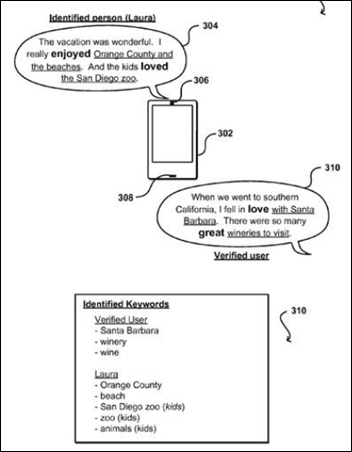









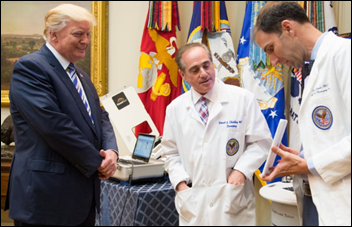



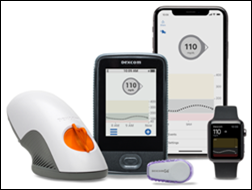
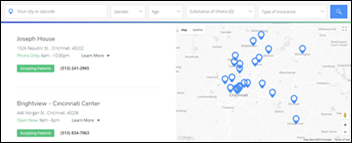




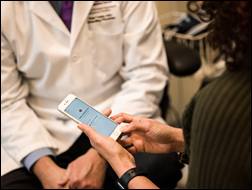

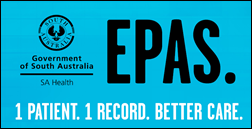
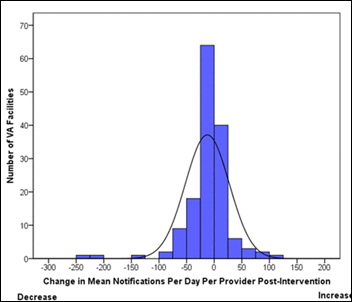

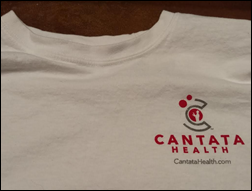




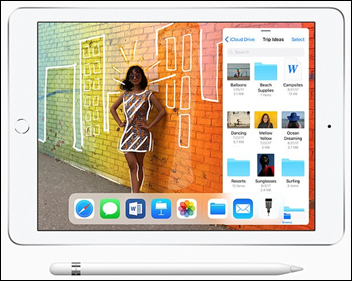

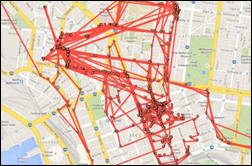







Re: Dr Z. Great story, but whatever happened to professional courtesy???